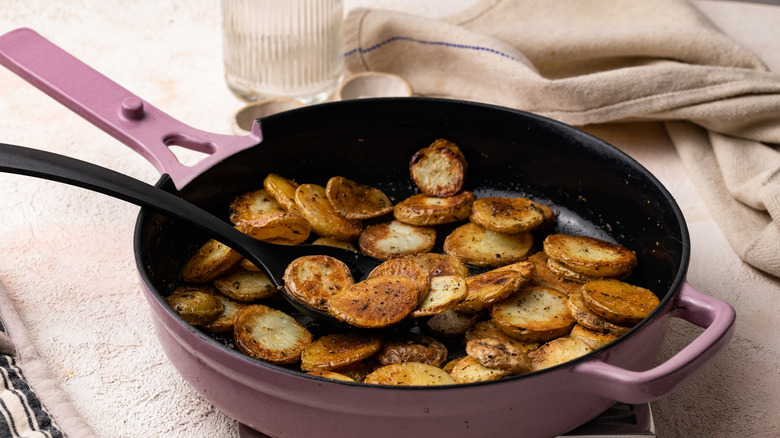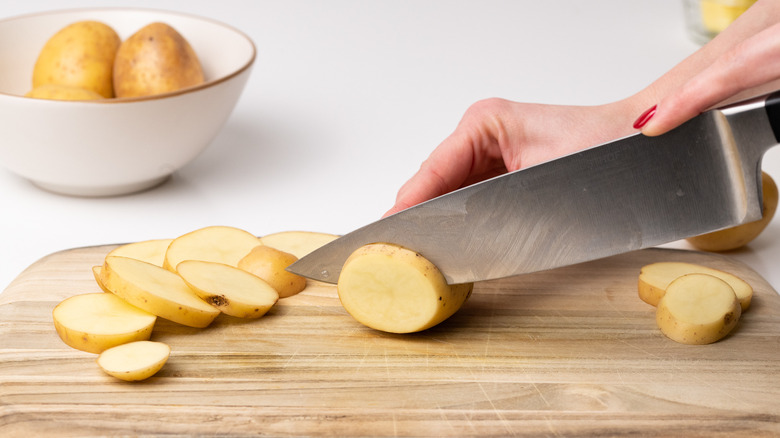The Easy Way To Make Skillet Potatoes Without Extra Steps
We may receive a commission on purchases made from links.
Potatoes are one of the most transformative starches, lending well to wet and dry cooking methods alike. Since they're so hearty, potatoes often entail both methods. Skillet potatoes, for example, tend to require parboiling thick-cut chunks because the pulp takes a lot longer to cook than it does to crisp up their exterior surfaces. However, you can skip this time-consuming step and still get perfectly cooked skillet potatoes by slicing your potatoes thinly.
Tasting Table recipe developer Jennine Rye slices Yukon gold potatoes into disks a third of an inch thick in her recipe for garlic herb skillet potatoes. The disks have a large surface area but they're thin enough to cook through quickly. The interior of each disk will get tender and fluffy at the same rate as they incur crispy, browned skin.
Another important tip Rye gives is to heat the oil at medium heat so it's nice and hot before placing a single layer of potato discs into them. This will kickstart the cooking process. You should also maintain a medium flame to ensure even cooking and even browning. The best skillets to maintain cooking oil temperatures are cast iron. You can find high-quality cast iron skillets online, like this one from Lodge, or a larger option like this pre-seasoned skillet from Amazon Basics. Keep in mind that even thinly sliced potato discs take about 10 minutes per side to cook and crisp up.
More skillet potato tips and steps
As with most dry cooking methods, the key to crispy and browned textures is not crowding the pan. The same goes for these potato discs, which Jennine Rye places in a single layer over hot oil. The discs can touch, but they shouldn't overlap. Another helpful tip to draw from her recipe is when to add aromatics and seasonings. Because your potatoes take around 20 minutes to cook on both sides, you don't want to add these to the hot oil at the beginning of the process and risk burning them or overcooking them. Instead, you should season your potatoes with herbs and spices once you've laid them over the hot cooking oil. For aromatics like garlic or scallions, you should wait until the very end of the cooking process.
You can add aromatics in with a dollop of butter for added flavor, tossing the potatoes to coat in the infused butter, which also encourages some extra browning. Butter has a low smoke point, so cooking oil with a higher smoke point — such as this canola oil and avocado oil from 365 — will render a nice texture without affecting their earthy flavors. That said, you can also blend olive oil and butter together if you're looking for a rich and savory complement. Waxy potatoes are the ideal type of potato for skillet potatoes because they'll hold their shape as they sizzle away in the hot oil and won't fall apart as you flip them.

